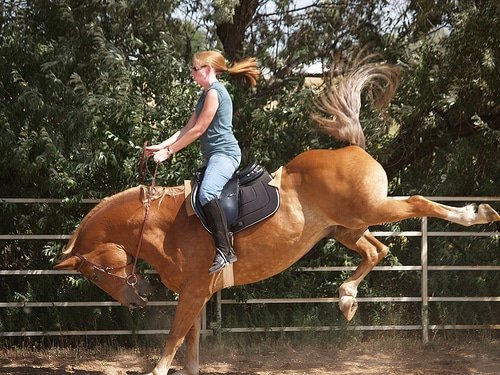
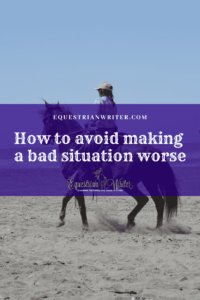
Even the best horses have bad days. No matter how broke your horse is, no matter how seasoned or how well trained, every horse can have a bad day. They are no different than people in that regard. We sometimes forget that they are not robots and get frustrated when they mess up. But they are living creatures with minds of their own and they have off days too. The most important thing to remember when things begin to fall apart is not to panic. Horses are often a reflection of their rider. If you panic, they will panic and things will just go from bad to worse.
What To Do When Everything Starts to Fall Apart
So, you’ve got your well trained horse. You’ve got your ride all planned out. The stage is set and everything seems perfect. It is every rider’s worst nightmare. Nothing puts a damper on a training session like a spooking, shying, mess of a melt down. But this is the situation where it is most vital not to panic. The horse is already convinced that the leaf, shadow or other monstrosity that set him off is going to eat him. If his rider panics, it will only fuel his melt down and escalate the situation further.
There are several approaches that you can take to deescalating the situation, but your approach will depend on your riding level and experience.
[clickToTweet tweet=”Horses are often a reflection of their rider. If you panic, they will panic and things will just go from bad to worse. #horsetraining #horses Read more on how to avoid making a bad situation worse:” quote=”Horses are often a reflection of their rider. If you panic, they will panic and things will just go from bad to worse.”]
Don’t Panic, Just Take a Step Back
This is where everyone needs to start. You need to know your own limits. What is your horse doing? Is he shying away from something he normal doesn’t? Is he bucking, rearing, kicking out? If he is doing any of the latter, you need to be honest with yourself about your ability to handle the situation safely. We often say “don’t get off on a bad note.” Bucking, rearing, or any similar silliness would certainly count as a bad note. However, your safety always comes before your horse’s training. Sucking it up and sticking with it won’t do any good if you end up in the hospital. It will only serve to shake your confidence and his even further. If you can stay on, that would be ideal. But, don’t be ashamed to get off if that is what it takes to keep yourself safe.
Assess the Situation
Once you are safe, it is also good to take a moment to evaluate if the horse has a legitimate reason for being off that day. Is he in pain? Are you using a different saddle? Bridle? Bit? Saddle pad? Is he lame? Does he need his feet trimmed? Have you changed his feed? Have his living arrangements changed (stall vs pasture)? If you’re riding a mare, is she in heat?
If no obvious cause for concern can be found in any of the above, consider where you as the rider may have gone wrong. Many times acting up under saddle that cannot be attributed to any of the above is actually a cause of rider error. Are you cuing precisely? Is your sequence of cues clear and deliberate?
Mitigate the Fallout
If there is nothing obvious to legitimize his complaints, put him immediately back to work. This work can take several forms. If you cannot safely stay on him, but have a trainer or another more experienced rider who is comfortable getting on and working him through it, great! Go for it. But, if you can’t stay on him and don’t have a more experienced rider to hand the reins to, you can still work him from the ground. This is why you should always have a lunge line handy. For this to work most effectively, your horse should already be trained in the art of classical lunging off the bridle. (For more on this type of lunging, click here.)
Work Through It On the Lunge
Make him work. Don’t let him think that you getting off means he’s getting a break. You getting off is not a reward. That doesn’t mean you’re going to run him in circles like a maniac to “make him regret it” or anything. But, you certainly aren’t going to make it fun.
Put him out on the lunge and keep him moving forward, preferably at a brisk trot. Don’t run him, but work him correctly. Make sure he is tracking up and moving forward with rhythm and impulsion. If he tries to buck or act up, do your best to ignore it unless you are in immediate danger. Forward motion fixes a lot of problems. Keep his feet moving and don’t give him time to think about any funny business.
Don’t let anger or panic get the best of you. Stay calm. You will win. That is a foregone conclusion. It is a matter of when you will win, not if you will win. Keep telling yourself that.
Ideally, you want to work him for 5 to 10 minutes — or until he settles down — and then get back on. Don’t run the air out of him though. He should be sweating, but he shouldn’t be so tired that he can barely stand. If you feel comfortable, get back on him, riding him around a bit at the walk. If you feel comfortable enough to go back to what you were doing when he spooked and went into the melt down, that would be perfect. If not, that’s ok. Walk him around a bit, then get off again. Establish that being ridden is easier than acting up and making you get off.
Work Through It Under Saddle
Now, if you are an experienced enough rider to work through the horse’s meltdown without getting off, that would be the best case scenario. Drop what you are doing and take a step back. Whether you were trying to back up, spin, side pass, lead change, or whatever, take one step back. Reestablish brisk forward motion in whatever gait you were working in directly prior to his melt down. Make sure your horse is still using himself properly. Get his back up, on the bit, tracking up, extend his stride and make him work. Don’t give him time to think about bucking, rearing, or any funny business.
As you get him moving forward and settling down, take a moment to reevaluate where you might have gone wrong. Again, go through all the possibilities of pain, environmental changes, and rider error. If it has been narrowed down to rider error, this is where you wipe the slate and start again. Review the sequence of your cues. Make any adjustments necessary to make them clearer. Set the stage better. Take your time. Try again. If he offers the right response, even if he doesn’t totally get it right, if he really tries and really thinks about, take it. Reward him like he just won a world championship. Then — and here’s the really important part — call it a day. Yup, quit, right then and there. Get out on a win. Let the reins out, walk him out, cool him off, then get off and put him up for the night. Let him stew over that over night and you will be amazed how much better he does tomorrow.
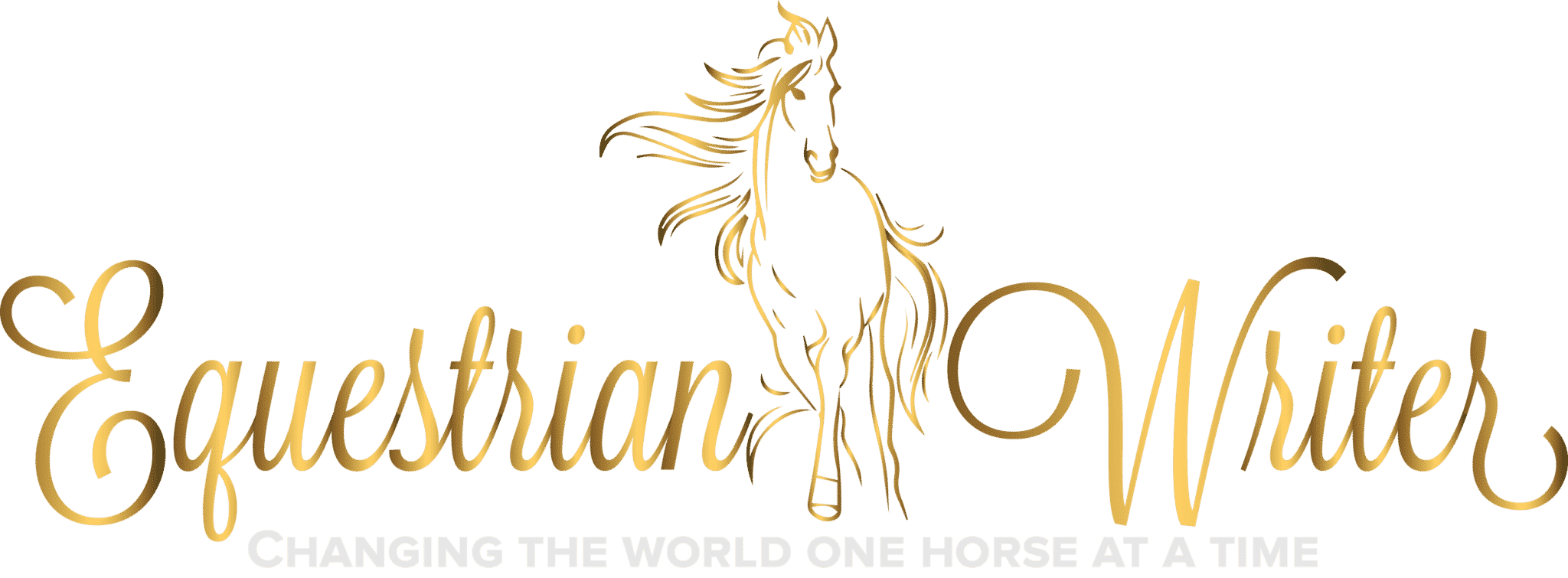





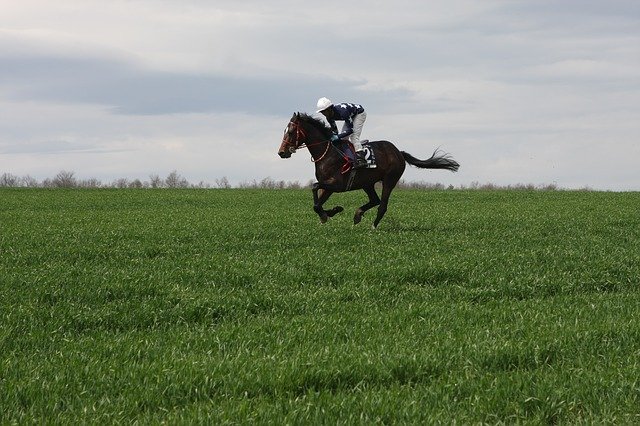
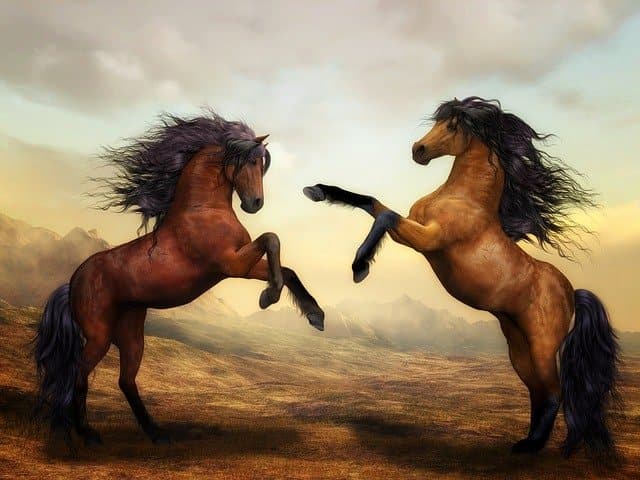
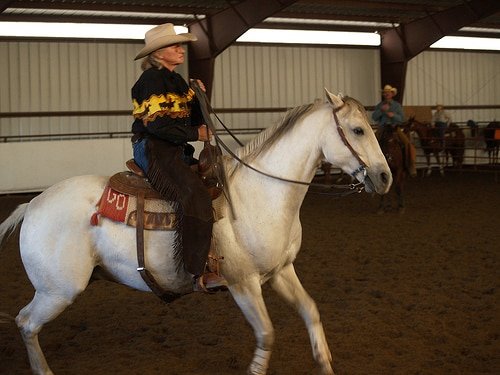
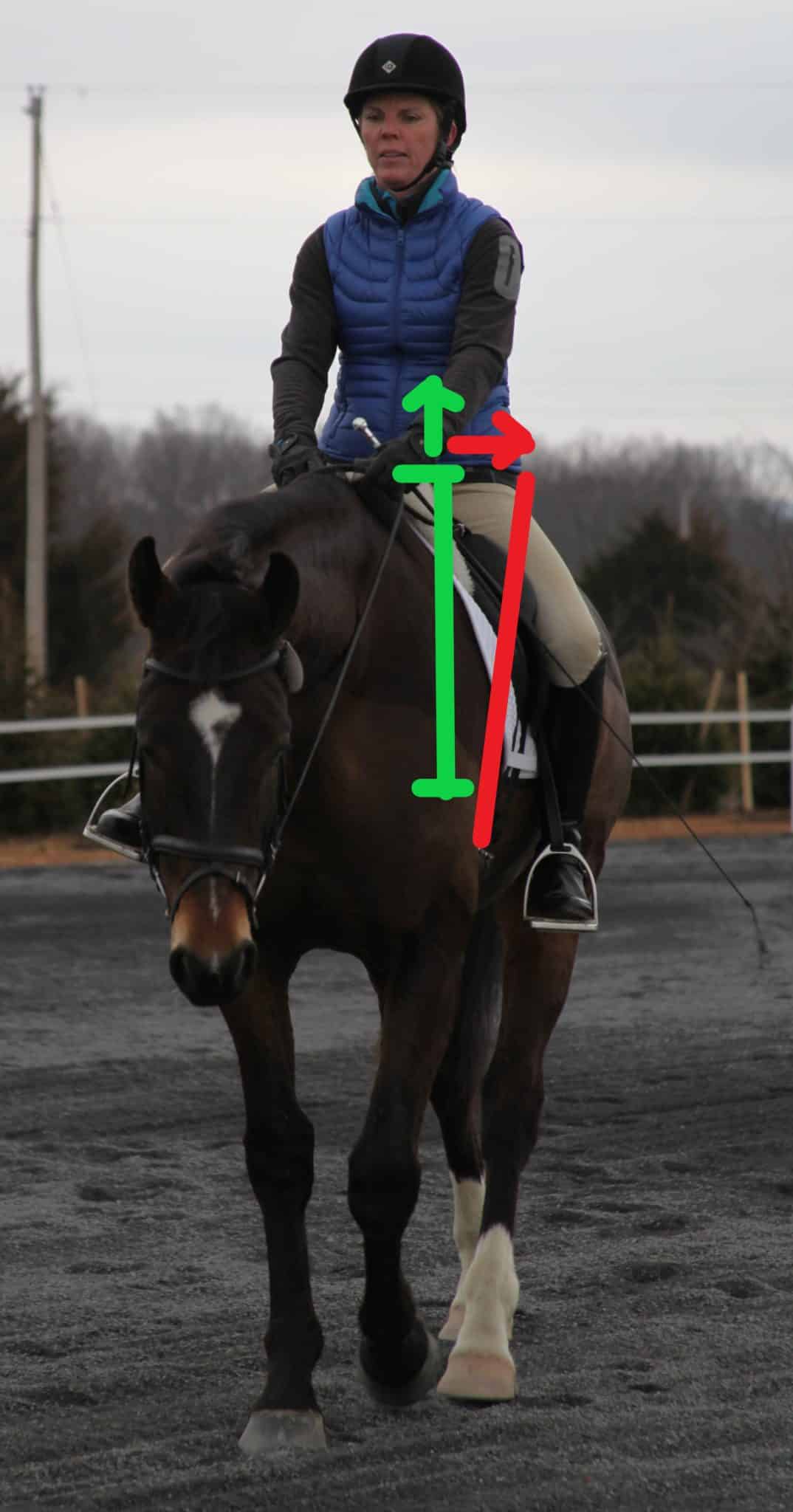
Great advice. I’ve found myself in that situation many a time with one of my horses. Yes, there were times when my anger at him led me to work him until he was a lather of sweat. That made him dig his heals in harder. I had to manage my emotions before I could work with him. I had to stop taking it personally and evaluate the situation. Yep, at times my cues were off or not clear. Sometimes it was all him. He will avoid work at any cost. Those times I learnt to say to myself get something small or if I was getting frustrated I went and had a cup of tea. This was a good time to breath and think about what happened and think about one thing I would ask and it would be so small, sometimes to take a step or two forward. Then I’d give him a pat and dismount. Over for the day. He is kinda a three steps forward four back horse. My long term schooling lessons to be learnt.